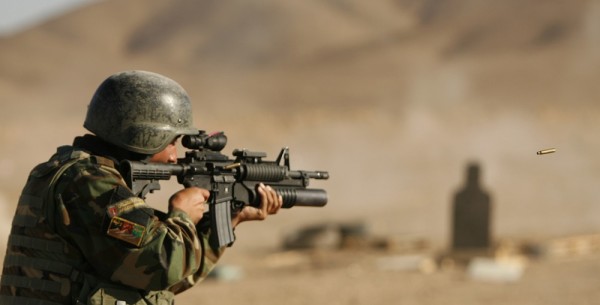

The war in Afghanistan, America’s first and most enduring foray into the Forever Wars, continues to go poorly, according to a quarterly report to Congress from the Special Inspector General Report for Afghanistan Reconstruction (SIGAR) published on April 30. And while the Pentagon seems convinced that the tide is definitely turning (any minute now!), here’s how the first few months of 2018 have shaped up:
- Afghan security forces numbers have sharply declined from last year: The assigned strength of the Afghan National Defense and Security Forces is estimated to be roughly 296,400 personnel as of January 2018, which is a drop of roughly 11% compared to the same time last year. The total authorized force strength of the ANDSF is 334,000.
DoD/SIGAR - The Taliban is slowly gaining ground, especially compared to where they stood when the U.S. first got involved in Afghanistan. The percentage of the population controlled or influenced by the Taliban increased from 64% in October to 65% in January, Reuters reports.
- The war on drugs isn’t working: Even will a multi-billion-dollar international effort to combat Afghanistan’s narcotics production, the total land area that’s actually used for opium-poppy cultivation increased by 63% during last year’s growing season, while raw opium production soared by an estimated 88%.
- U.S. airstrikes are up … : This year has seen a marked uptick in the number of U.S. airstrikes conducted in Afghanistan, with the U.S. Central Command reporting a total of 1,186 munitions dropped over 215 missions between January and March 2018. The volume of ordnance dropped in the first quarter makes it the highest recorded for this period since SIGAR began tracking the stats in 2013.
- … but so are civilian casualties: Anti-government forces caused 67% of civilian casualties in the first quarter of 2018, a 6% increase from the same period in 2017. Of that number, half were attributed to the Taliban, 11% to ISIS-K and 4% to unidentified groups, including some self-proclaimed ISIS-affiliated organizations. Even worse, anti-government attacks deliberately targeting civilians accounted for 39% of all civilian casualties — more than double the same time last year.
- Afghanistan is far from economically independent: While economic stability is widely seen as a linchpin for establishing security, and ushering in an era of peace in Afghanistan, that hasn’t been going well. Indeed, the SIGAR report notes that the gains made in per capita income and growth in telecommunications, transport and construction sectors are largely the result of substantial foreign aid — and therefore, not sustainable in the long run.
